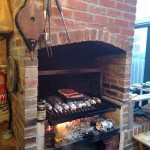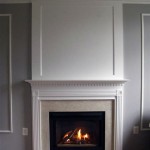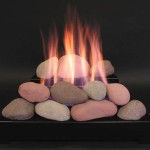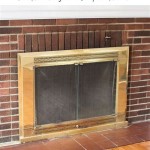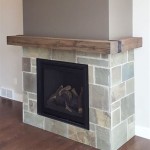How Much Are Wood Burning Fireplace Inserts? A Comprehensive Guide to Pricing
Wood burning fireplace inserts are increasingly popular choices for homeowners seeking to enhance the efficiency and aesthetic appeal of their existing fireplaces. These inserts, essentially self-contained wood stoves designed to fit inside a traditional fireplace opening, offer numerous benefits over open fireplaces, including improved heating efficiency, reduced emissions, and enhanced safety. However, a primary concern for many prospective buyers is the cost. This article aims to provide a detailed overview of the factors influencing the price of wood burning fireplace inserts, offering a comprehensive guide to understanding the financial investment involved.
The price of a wood burning fireplace insert is influenced by a complex interplay of factors, spanning from the core characteristics of the insert itself to the installation requirements specific to the home. Understanding these elements is crucial for budgeting accurately and making an informed purchase decision. Without a clear understanding of these cost drivers, homeowners may find themselves facing unexpected expenses or making suboptimal choices regarding their heating solutions.
Several key aspects contribute significantly to the final cost, including the insert's size and heating capacity, the materials used in its construction, the efficiency rating, any additional features or technology, and the labor costs associated with professional installation. Furthermore, regional variations in pricing and the availability of government incentives can also play a role in determining the overall investment required.
The following sections will delve into each of these factors in greater detail, providing a comprehensive understanding of how they contribute to the overall cost of a wood burning fireplace insert. By examining these elements, homeowners can gain a clearer picture of the financial implications involved and make well-informed decisions that align with their heating needs and budgetary constraints.
Factors Influencing the Base Cost of the Insert
The base cost of a wood burning fireplace insert is primarily determined by its size, heating capacity (measured in BTUs - British Thermal Units), the materials from which it is constructed, and its overall efficiency. These elements are fundamental to the insert's performance and longevity, and therefore, directly impact its price.
Larger inserts, capable of heating larger spaces, naturally command a higher price. This is due to the increased material requirements, more complex manufacturing processes, and greater firebox volume. The BTU rating provides a clear indication of the insert's heating potential; higher BTU ratings translate to greater heating capacity and, generally, a higher price point. Homeowners must carefully assess the square footage of the area they intend to heat and choose an insert with an appropriate BTU rating to ensure optimal performance.
The materials used in the construction of the insert also play a significant role in determining its cost and durability. Inserts constructed from heavy-duty steel or cast iron are generally more expensive than those made from thinner or less robust materials. These materials offer superior heat retention, longevity, and resistance to warping or cracking under high temperatures. Cast iron inserts, in particular, are prized for their aesthetic appeal and ability to radiate heat effectively, but they often come with a significantly higher price tag.
Efficiency is another critical factor influencing the base cost. More efficient inserts burn wood more completely, extracting more heat from each log and reducing emissions. Higher efficiency ratings often correlate with more advanced combustion technology, such as catalytic or non-catalytic systems, which require more sophisticated engineering and manufacturing processes. These advanced systems contribute to higher initial costs but can result in long-term savings through reduced fuel consumption and lower environmental impact.
Beyond these core elements, any additional features or technologies integrated into the insert will also affect its price. These features might include automated blowers to circulate heat, thermostatic controls for precise temperature regulation, self-cleaning glass doors, and advanced air wash systems to keep the glass clean. These features enhance user convenience and improve the overall heating experience, but they also add to the upfront cost of the insert.
Installation Costs: A Breakdown of Expenses
While the base cost of the wood burning fireplace insert is a significant expense, installation costs can also represent a substantial portion of the total investment. These costs encompass a range of services, including the removal of any existing fireplace components, the preparation of the fireplace opening, the installation of a proper chimney liner, and the connection of the insert to the chimney system. Professional installation is highly recommended, and often required by local regulations and insurance providers, to ensure safety and optimal performance.
A primary expense associated with installation is the chimney liner. Most modern wood burning fireplace inserts require a dedicated stainless steel chimney liner to ensure proper venting of combustion gases and prevent the buildup of creosote, a flammable byproduct of wood burning. The cost of the chimney liner depends on its diameter, length, and material grade. Longer chimneys and higher-grade stainless steel will naturally increase the cost. The installation of the liner itself can be a complex and labor-intensive process, especially in older homes or chimneys with unusual configurations.
The preparation of the fireplace opening may also involve significant costs, particularly if the existing fireplace is in poor condition or requires modifications to accommodate the insert. This could include repairing or reinforcing the firebox, modifying the hearth, or addressing any structural issues that could compromise the safety of the installation. In some cases, the fireplace opening may need to be enlarged to properly fit the insert, which can add to the labor costs.
Labor costs for professional installation can vary significantly depending on the region, the complexity of the installation, and the experience of the installer. It is essential to obtain multiple quotes from qualified installers and carefully review their bids to ensure that all necessary services are included and that the pricing is transparent. Factors that can influence labor costs include the accessibility of the chimney, the difficulty of routing the chimney liner, and the time required to complete the installation.
Furthermore, permit fees may be required by local building codes. These fees vary depending on the jurisdiction and the scope of the work being performed. It is crucial to obtain the necessary permits before commencing the installation to avoid potential fines or delays. The installer can typically assist with the permit application process and ensure that the installation complies with all applicable regulations.
Additional Costs and Long-Term Considerations
Beyond the base cost of the insert and the immediate installation expenses, homeowners should also consider several additional costs and long-term factors that can impact the overall financial investment. These considerations include ongoing maintenance, fuel costs, and potential government incentives or rebates.
Regular maintenance is essential to ensure the safe and efficient operation of the wood burning fireplace insert. This includes annual chimney inspections and cleaning to remove creosote buildup, which can pose a significant fire hazard. Professional chimney sweeps typically charge a fee for this service, and the frequency of cleaning may depend on the type of wood burned and the usage of the insert. The insert itself may also require periodic maintenance, such as replacing worn gaskets or cleaning the blower motor. These routine maintenance tasks are necessary to prolong the lifespan of the insert and maintain its optimal performance.
Fuel costs represent a significant ongoing expense. The price of firewood can vary depending on the region, the type of wood, and the quantity purchased. Seasoned hardwood, such as oak or maple, typically provides the best heating value and burns more cleanly than softwood. Homeowners should factor in the cost of purchasing, transporting, and storing firewood when budgeting for the overall heating expenses. Alternatively, some homeowners may choose to harvest their own firewood, but this requires access to appropriate land and the necessary equipment.
Government incentives or rebates may be available to offset the cost of purchasing and installing a high-efficiency wood burning fireplace insert. These incentives are often offered at the federal, state, or local level and are designed to promote the use of cleaner and more efficient heating appliances. Homeowners should research available incentives in their area and carefully review the eligibility requirements. Applying for these incentives can significantly reduce the overall financial burden of the investment.
Finally, homeowners should consider the potential impact of the wood burning fireplace insert on their home's insurance premiums. Some insurance providers may charge higher premiums for homes with wood-burning appliances due to the increased risk of fire. It is essential to contact the insurance company to inquire about any potential changes to the policy and to ensure that the installation complies with all applicable insurance requirements.
By carefully considering all of these factors, homeowners can develop a comprehensive understanding of the financial investment required for a wood burning fireplace insert and make informed decisions that align with their heating needs, budgetary constraints, and long-term goals.

Lopi Premium Wood Fireplace Inserts Custom Hearth Fireplaces And Stoves

Estimated Page Fireplaces Stoves Inserts Wood Gas Pellet

Ventis Hei240 Wood Burning Insert Rockford Chimney

Wood Burning Fireplace Inserts Insert Installation

Wood Inserts We Love Fire

Buy Regency Cascades Wood Insert I2500 Or In
.aspx?strip=all)
Cost Of Operating A Wood Insert Cord Calculator Regency

Osburn 3500 Wood Burning Fireplace Insert 31 Ob03510 Hvacdirect Com

Why A Wood Burning Fireplace Insert Bethesda Md Service

Large Flush Wood Rectangular Nexgen Hybrid Made In America Fireplace Xtrordinair

